

Safety is paramount in all forms of racing, and the World of Outlaws along with our safety partners strive to provide the safest racing possible for competitors, as well as officials and fans. With things ever-changing in the sport, dedicated officials are constantly analyzing on-track incidents to further safety innovations. Here is a look at some of those innovations, rules, and requirements that keep safety at the forefront.
The most important safety factors, when it comes to the driver, are minimizing impact to the head and body, keeping the driver contained within the vehicle, and protecting against fire.
A firesuit, also known as a racing suit is designed to provide protection to the driver in case of a fire-related incident on the track, and is made out of a special fire resistant material to prevent burns. The gloves and shoes that a driver wears are made from the same material.
Firesuits are made from specialized fire-resistant materials that can withstand high temperatures and flames. In the event of a crash or collision that results in a fire, the firesuit helps shield the driver's body from burns and heat exposure, giving them valuable time to exit the vehicle safely. Drivers also wear fire resistant underwear, adding an additional layer of protection.
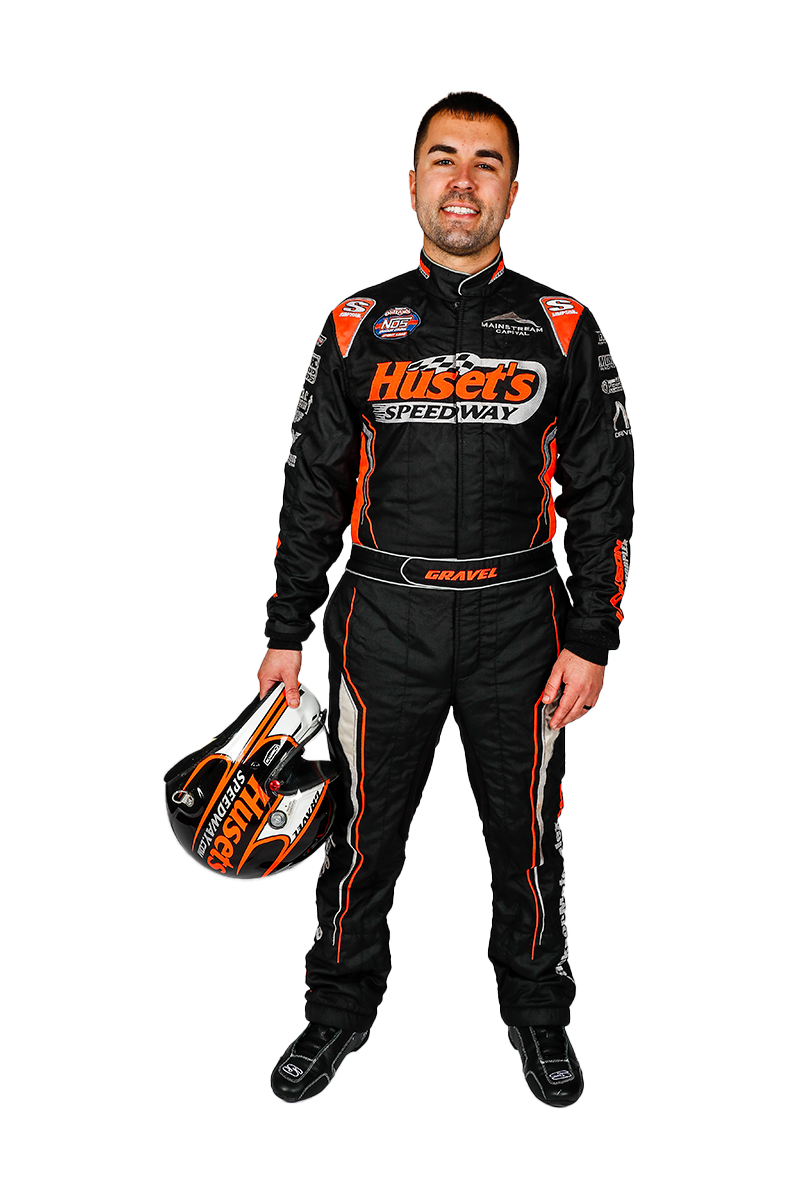
Firesuits are engineered to provide a few extra seconds of protection and insulation, allowing drivers to quickly evacuate their cars without succumbing to the immediate effects of a fire. This can be crucial for preventing serious injuries or fatalities.
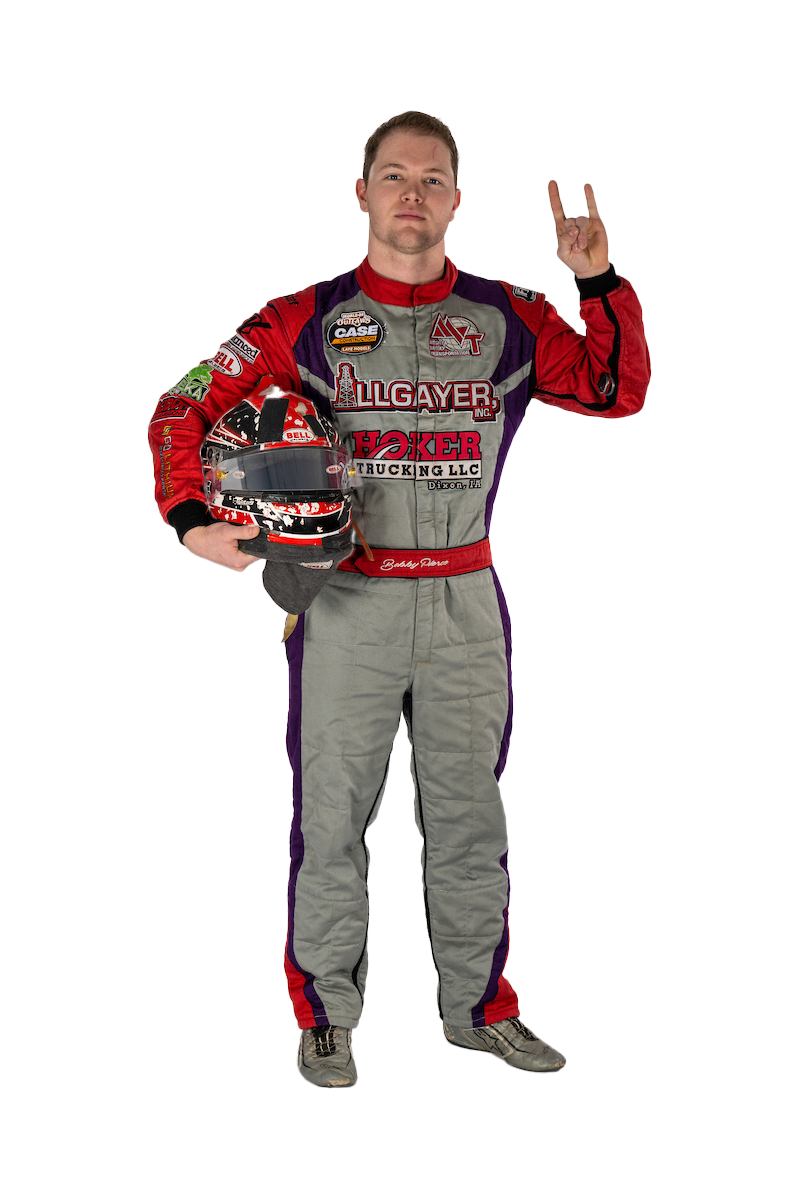
Firesuits are also designed to help manage the heat generated within the cockpit of a race car. They are often constructed with breathable materials and cooling technologies to help drivers stay comfortable during races, which can be physically demanding due to the extreme conditions inside the car.
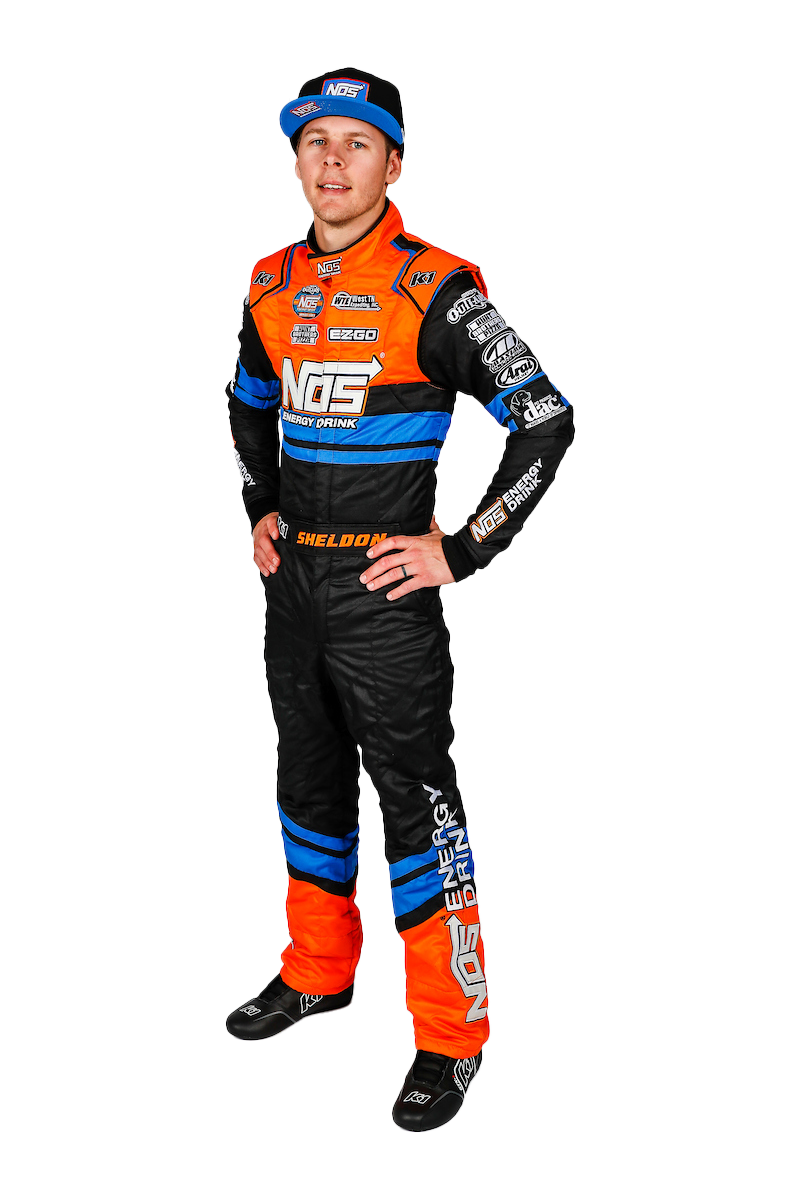
Firesuits are made from specialized fire-resistant materials that can withstand high temperatures and flames. In the event of a crash or collision that results in a fire, the firesuit helps shield the driver's body from burns and heat exposure, giving them valuable time to exit the vehicle safely. Drivers also wear fire resistant underwear, adding an additional layer of protection.

Firesuits are engineered to provide a few extra seconds of protection and insulation, allowing drivers to quickly evacuate their cars without succumbing to the immediate effects of a fire. This can be crucial for preventing serious injuries or fatalities.

Firesuits are also designed to help manage the heat generated within the cockpit of a race car. They are often constructed with breathable materials and cooling technologies to help drivers stay comfortable during races, which can be physically demanding due to the extreme conditions inside the car.

A helmet is designed to protect the driver's head in case of a crash or collision. The head is particularly vulnerable to injury in high-speed accidents, and a helmet helps absorb and distribute impact forces, reducing the risk of severe head trauma.
Helmets are equipped with layers of padding and energy-absorbing materials that help dissipate the forces generated during a crash. This helps reduce the risk of concussions and other head injuries.
.jpg?width=1772&height=1817&name=1204001-rs7-carbon-duckbill_1_12_1%20(1).jpg)
During a race, debris and flying objects can be kicked up from the track or generated by other vehicles. A helmet provides a barrier against these potential hazards, preventing objects from striking the driver's head and face.
.jpg?width=1772&height=1817&name=1204001-rs7-carbon-duckbill_1_12_1%20(1).jpg)
In the event of a rollover or car flipping, a helmet offers protection to the driver's head from hitting the car's interior or the ground, minimizing the risk of injury.
.jpg?width=1772&height=1817&name=1204001-rs7-carbon-duckbill_1_12_1%20(1).jpg)
Helmets used in motorsports are often constructed with fire-resistant materials to provide additional protection in case of a fire-related incident. This is especially important given the potential for fires in racing accidents.
.jpg?width=1772&height=1817&name=1204001-rs7-carbon-duckbill_1_12_1%20(1).jpg)
Modern racing helmets are equipped with a one-way communication systems that allow drivers to hear race officials who will pass along information about cautions, lineups, etc.
.jpg?width=1772&height=1817&name=1204001-rs7-carbon-duckbill_1_12_1%20(1).jpg)
Helmets in dirt racing feature a clear visor that are available in several tints and shades to suit a driver’s preference. They also have several layers of thin plastic sheeting known as “tear-offs” which a driver can remove for a clear view of the track ahead.
.jpg?width=1772&height=1817&name=1204001-rs7-carbon-duckbill_1_12_1%20(1).jpg)
Helmets are equipped with layers of padding and energy-absorbing materials that help dissipate the forces generated during a crash. This helps reduce the risk of concussions and other head injuries.
.jpg?width=1772&height=1817&name=1204001-rs7-carbon-duckbill_1_12_1%20(1).jpg)
During a race, debris and flying objects can be kicked up from the track or generated by other vehicles. A helmet provides a barrier against these potential hazards, preventing objects from striking the driver's head and face.
.jpg?width=1772&height=1817&name=1204001-rs7-carbon-duckbill_1_12_1%20(1).jpg)
In the event of a rollover or car flipping, a helmet offers protection to the driver's head from hitting the car's interior or the ground, minimizing the risk of injury.
.jpg?width=1772&height=1817&name=1204001-rs7-carbon-duckbill_1_12_1%20(1).jpg)
Helmets used in motorsports are often constructed with fire-resistant materials to provide additional protection in case of a fire-related incident. This is especially important given the potential for fires in racing accidents.
.jpg?width=1772&height=1817&name=1204001-rs7-carbon-duckbill_1_12_1%20(1).jpg)
Modern racing helmets are equipped with a one-way communication systems that allow drivers to hear race officials who will pass along information about cautions, lineups, etc.
.jpg?width=1772&height=1817&name=1204001-rs7-carbon-duckbill_1_12_1%20(1).jpg)
Helmets in dirt racing feature a clear visor that are available in several tints and shades to suit a driver’s preference. They also have several layers of thin plastic sheeting known as “tear-offs” which a driver can remove for a clear view of the track ahead.
.jpg?width=1772&height=1817&name=1204001-rs7-carbon-duckbill_1_12_1%20(1).jpg)
The primary purpose of a Head and Neck Restraint device is to prevent excessive head and neck movement, which can lead to serious injuries, particularly in situations involving rapid deceleration or impact
In a crash or collision, the sudden deceleration forces can cause a driver's head to move violently forward and then snap back, resulting in whiplash-type injuries. A HANS device restricts this movement, helping to prevent injuries to the neck, spine, and head.
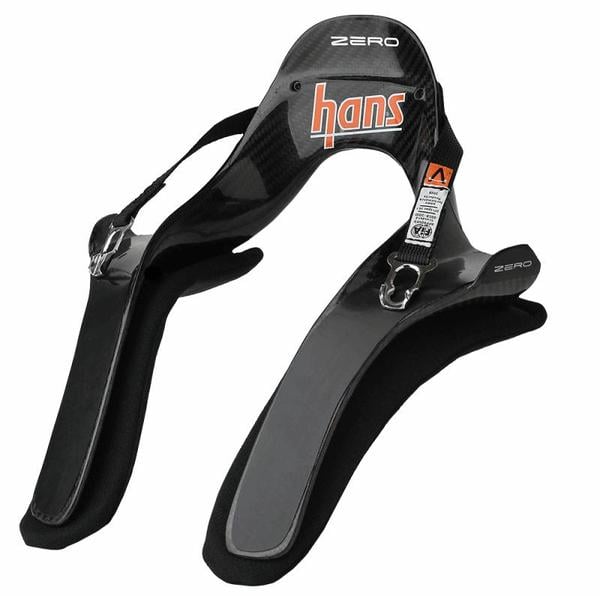
A basilar skull fracture is a serious and potentially fatal injury that can occur if the head and neck are subjected to significant forces during an accident. The HANS device helps to distribute and absorb these forces, reducing the risk of such fractures.

The HANS device is designed to keep the driver's head and neck in a more stable position during impacts and crashes. This stability helps to minimize the risk of injury to the cervical spine and surrounding structures.

The HANS device works in conjunction with other safety equipment, such as the helmet and seatbelts. Together, these components create a comprehensive safety system that better protects the driver's head, neck, and upper body.

In a crash or collision, the sudden deceleration forces can cause a driver's head to move violently forward and then snap back, resulting in whiplash-type injuries. A HANS device restricts this movement, helping to prevent injuries to the neck, spine, and head.

A basilar skull fracture is a serious and potentially fatal injury that can occur if the head and neck are subjected to significant forces during an accident. The HANS device helps to distribute and absorb these forces, reducing the risk of such fractures.

The HANS device is designed to keep the driver's head and neck in a more stable position during impacts and crashes. This stability helps to minimize the risk of injury to the cervical spine and surrounding structures.

The HANS device works in conjunction with other safety equipment, such as the helmet and seatbelts. Together, these components create a comprehensive safety system that better protects the driver's head, neck, and upper body.

Safety harnesses play a critical role in dirt racing by securely restraining the driver within the vehicle's cockpit, providing protection against the forces generated during high-speed races and potential accidents. The main function of safety harnesses in dirt racing is to enhance driver safety by preventing excessive movement, minimizing the risk of injury, and improving the driver's ability to maintain control of the vehicle.
Safety harnesses consist of shoulder and lap belts that restrain the driver's body, ensuring they remain securely seated in the racing seat. This prevents the driver from being thrown around the cockpit during sudden stops, starts, or impacts, reducing the risk of injuries from hitting the interior of the car.

Safety harnesses work in conjunction with the racing seat to absorb and distribute impact forces. The harness system helps spread the forces generated by a crash across a larger area of the body, reducing the risk of concentrated impact points.

Properly adjusted safety harnesses keep the driver's body positioned correctly within the vehicle. This positioning ensures that the driver's hands are appropriately placed on the steering wheel and their feet are on the pedals, allowing them to maintain better control over the car.

Safety harnesses are designed to be compatible with other safety equipment, such as helmets, head and neck restraint systems (HANS devices), and racing suits. This integration ensures that all safety components work together effectively to provide maximum protection.

Many safety harnesses are equipped with quick-release mechanisms that allow for rapid egress from the vehicle in case of an emergency. This feature is crucial for enabling the driver to exit the car quickly if needed.

Safety harnesses consist of shoulder and lap belts that restrain the driver's body, ensuring they remain securely seated in the racing seat. This prevents the driver from being thrown around the cockpit during sudden stops, starts, or impacts, reducing the risk of injuries from hitting the interior of the car.

Safety harnesses work in conjunction with the racing seat to absorb and distribute impact forces. The harness system helps spread the forces generated by a crash across a larger area of the body, reducing the risk of concentrated impact points.

Properly adjusted safety harnesses keep the driver's body positioned correctly within the vehicle. This positioning ensures that the driver's hands are appropriately placed on the steering wheel and their feet are on the pedals, allowing them to maintain better control over the car.

Safety harnesses are designed to be compatible with other safety equipment, such as helmets, head and neck restraint systems (HANS devices), and racing suits. This integration ensures that all safety components work together effectively to provide maximum protection.

Many safety harnesses are equipped with quick-release mechanisms that allow for rapid egress from the vehicle in case of an emergency. This feature is crucial for enabling the driver to exit the car quickly if needed.

A containment seat in dirt racing serves as a specialized safety feature designed to provide enhanced protection to the driver's head and neck during high-speed races on dirt tracks. The primary function of a containment seat is to minimize the risk of head and neck injuries, particularly in the event of a crash or collision.
One of the primary functions of a containment seat is to provide improved support for the driver's head and neck. The seat's design incorporates built-in side headrests and lateral supports that cradle the driver's head and keep it more stable during high-speed maneuvers and impacts.
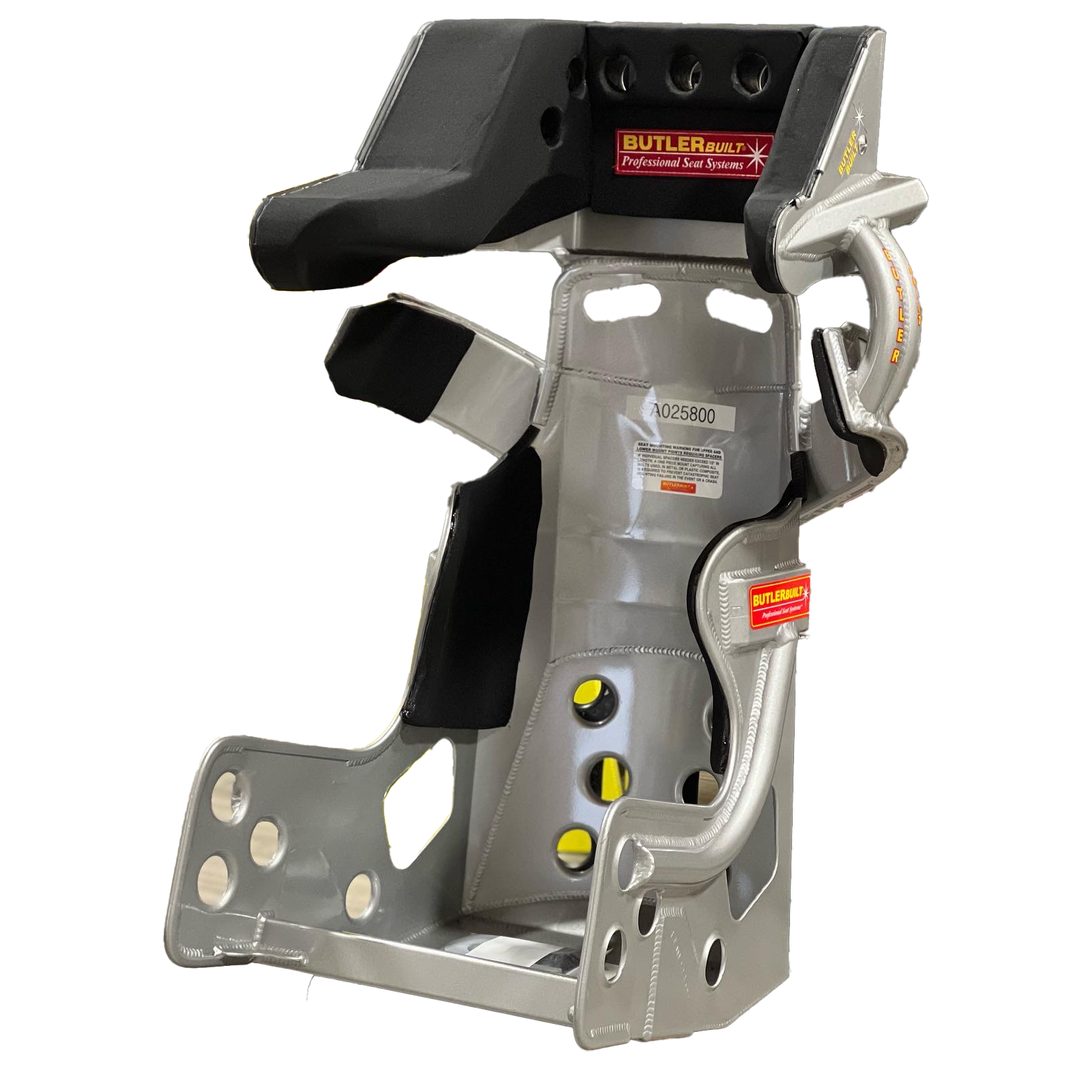
Containment seats are designed to limit the lateral movement of the driver's head and helmet. This helps prevent excessive side-to-side movement that can lead to neck strain or injury, especially when the car is subjected to lateral forces or collisions.

A containment seat can help reduce the risk of basilar skull fractures, which can occur if the head is subjected to sudden deceleration forces. By providing better support and restraint for the head, the seat helps distribute impact forces and reduce the likelihood of these severe injuries.

Similar to other safety seats, a containment seat is constructed with energy-absorbing materials that help cushion and absorb impact forces during crashes. This can help reduce the overall impact transferred to the driver's body.

Containment seats are often custom-fitted to the driver's body, ensuring a snug and secure fit. This personalized fit enhances the driver's ability to maintain control of the vehicle and react effectively to changing track conditions.

Containment seats are designed to work in conjunction with other safety equipment, such as head and neck restraint systems (HANS devices) and full-face helmets. These components together create a comprehensive safety system that provides maximum protection.

One of the primary functions of a containment seat is to provide improved support for the driver's head and neck. The seat's design incorporates built-in side headrests and lateral supports that cradle the driver's head and keep it more stable during high-speed maneuvers and impacts.

Containment seats are designed to limit the lateral movement of the driver's head and helmet. This helps prevent excessive side-to-side movement that can lead to neck strain or injury, especially when the car is subjected to lateral forces or collisions.

A containment seat can help reduce the risk of basilar skull fractures, which can occur if the head is subjected to sudden deceleration forces. By providing better support and restraint for the head, the seat helps distribute impact forces and reduce the likelihood of these severe injuries.

Similar to other safety seats, a containment seat is constructed with energy-absorbing materials that help cushion and absorb impact forces during crashes. This can help reduce the overall impact transferred to the driver's body.

Containment seats are often custom-fitted to the driver's body, ensuring a snug and secure fit. This personalized fit enhances the driver's ability to maintain control of the vehicle and react effectively to changing track conditions.

Containment seats are designed to work in conjunction with other safety equipment, such as head and neck restraint systems (HANS devices) and full-face helmets. These components together create a comprehensive safety system that provides maximum protection.

A roll cage in a dirt race car serves a crucial safety function by providing structural reinforcement to the vehicle's chassis and protecting the driver in the event of a rollover or other types of accidents. The primary purpose of a roll cage is to create a protective cage-like structure around the driver's compartment that helps prevent the roof from collapsing and minimizes the risk of injury to the driver.
The primary function of a roll cage is to provide protection to the driver in the event of a rollover. Dirt racing tracks can be unpredictable, and rollovers are not uncommon. The roll cage forms a strong and rigid framework that helps prevent the roof, sides, and other parts of the car from collapsing onto the driver during a rollover.

A well-designed roll cage reinforces the structural integrity of the entire vehicle. It helps distribute impact forces more evenly throughout the chassis, reducing the risk of deformation and enhancing the car's ability to withstand crashes and collisions.

In addition to protecting against rollovers, a roll cage can help absorb and dissipate some of the energy generated during impacts and crashes. This can reduce the forces transferred to the driver and help minimize the risk of injury.

The roll cage creates a designated space within the car's cockpit where the driver can be safely contained. This helps prevent the driver from being ejected from the vehicle in the event of a collision.

Roll cages often have multiple attachment points that secure the driver's safety harnesses, seat, and head and neck restraint systems (if used). These attachment points ensure that the safety equipment functions effectively and provides the highest level of protection.

The primary function of a roll cage is to provide protection to the driver in the event of a rollover. Dirt racing tracks can be unpredictable, and rollovers are not uncommon. The roll cage forms a strong and rigid framework that helps prevent the roof, sides, and other parts of the car from collapsing onto the driver during a rollover.

A well-designed roll cage reinforces the structural integrity of the entire vehicle. It helps distribute impact forces more evenly throughout the chassis, reducing the risk of deformation and enhancing the car's ability to withstand crashes and collisions.

In addition to protecting against rollovers, a roll cage can help absorb and dissipate some of the energy generated during impacts and crashes. This can reduce the forces transferred to the driver and help minimize the risk of injury.

The roll cage creates a designated space within the car's cockpit where the driver can be safely contained. This helps prevent the driver from being ejected from the vehicle in the event of a collision.

Roll cages often have multiple attachment points that secure the driver's safety harnesses, seat, and head and neck restraint systems (if used). These attachment points ensure that the safety equipment functions effectively and provides the highest level of protection.

A dirt racing fuel cell is a specialized type of fuel tank designed specifically for dirt track racing vehicles. It incorporates various safety features and design elements to minimize the risks associated with fuel-related incidents and collisions that can occur during dirt racing.
Many dirt racing fuel cells are constructed with flexible bladder materials that surround the fuel, as opposed to traditional metal fuel tanks. Bladder construction helps prevent fuel spillage in the event of an impact or rollover, reducing the risk of fires and environmental hazards.

Fuel cells often incorporate foam baffling inside the bladder. This foam serves multiple purposes, including reducing fuel sloshing during races, helping to prevent fuel starvation during high-G corners, and providing an additional layer of impact absorption to reduce the force transferred to the driver in a crash.

Some dirt racing fuel cells feature internal safety foam that helps suppress fuel movement and decreases the likelihood of explosions or fires during impacts.

Fuel cells may be equipped with specialized fill valves and check valves that prevent fuel spillage or leakage during pit stops or rollovers. These valves help maintain a safer racing environment by reducing the risk of fuel-related incidents.

Some fuel cells are designed with rollover check valves that prevent fuel from escaping the cell in the event of a rollover. This feature further reduces the chances of fires or fuel leaks during accidents.

Proper mounting and securing of the fuel cell are critical for safety. The design of dirt racing fuel cells often includes reinforced mounting points and brackets to ensure that the fuel cell remains securely in place even during impacts or rollovers.

Pressure relief valves are integrated into some fuel cells to prevent excess pressure buildup within the cell, which can occur due to temperature changes or other factors. This reduces the risk of fuel tank rupture

Many dirt racing fuel cells are constructed with flexible bladder materials that surround the fuel, as opposed to traditional metal fuel tanks. Bladder construction helps prevent fuel spillage in the event of an impact or rollover, reducing the risk of fires and environmental hazards.

Fuel cells often incorporate foam baffling inside the bladder. This foam serves multiple purposes, including reducing fuel sloshing during races, helping to prevent fuel starvation during high-G corners, and providing an additional layer of impact absorption to reduce the force transferred to the driver in a crash.

Some dirt racing fuel cells feature internal safety foam that helps suppress fuel movement and decreases the likelihood of explosions or fires during impacts.

Fuel cells may be equipped with specialized fill valves and check valves that prevent fuel spillage or leakage during pit stops or rollovers. These valves help maintain a safer racing environment by reducing the risk of fuel-related incidents.

Some fuel cells are designed with rollover check valves that prevent fuel from escaping the cell in the event of a rollover. This feature further reduces the chances of fires or fuel leaks during accidents.

Proper mounting and securing of the fuel cell are critical for safety. The design of dirt racing fuel cells often includes reinforced mounting points and brackets to ensure that the fuel cell remains securely in place even during impacts or rollovers.

Pressure relief valves are integrated into some fuel cells to prevent excess pressure buildup within the cell, which can occur due to temperature changes or other factors. This reduces the risk of fuel tank rupture

Sprint Cars and Late Models have an on-board fire suppression system by rule. The high-speed nature of Dirt Racing, along with the use of flammable fuels and fluids combined with the potential for accidents, creates an environment where fires can occur. The fire suppression system is designed to quickly extinguish or control fires that may arise in the event of a crash or other incidents on the track.
These systems typically consist of fire extinguishers or fire suppression agents strategically placed within the cockpit and other vulnerable areas of the race car, such as the engine compartment and fuel cell area. When activated, these systems release fire-suppressing agents to quickly extinguish or control fires.
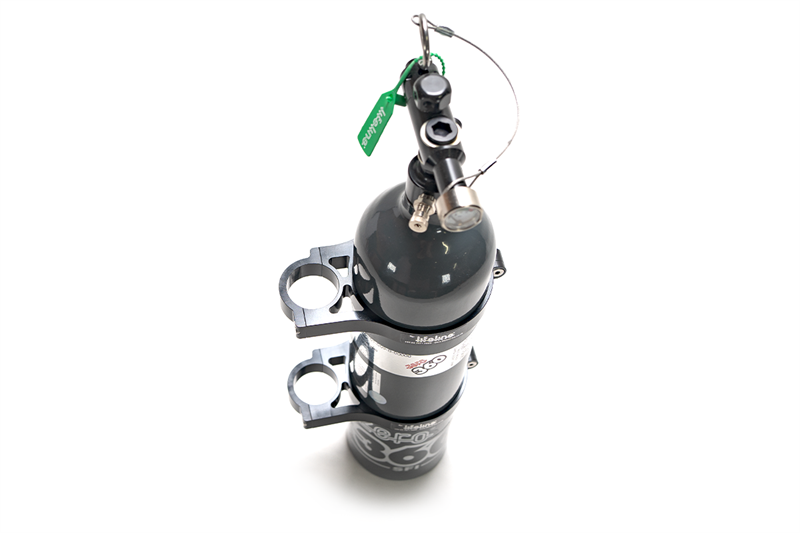
Fire suppression systems can be activated manually by the driver or automatically in response to specific conditions, such as elevated temperatures or impacts. Automatic activation systems provide an additional layer of safety, as they can initiate fire suppression measures even if the driver is incapacitated.

Nozzles for fire suppression agents are strategically positioned to target critical areas of the race car, such as the driver's cockpit, engine, fuel cell, and other potential fire sources. This ensures that the fire-suppressing agents are directed to where they are most needed.

These systems typically consist of fire extinguishers or fire suppression agents strategically placed within the cockpit and other vulnerable areas of the race car, such as the engine compartment and fuel cell area. When activated, these systems release fire-suppressing agents to quickly extinguish or control fires.

Fire suppression systems can be activated manually by the driver or automatically in response to specific conditions, such as elevated temperatures or impacts. Automatic activation systems provide an additional layer of safety, as they can initiate fire suppression measures even if the driver is incapacitated.

Nozzles for fire suppression agents are strategically positioned to target critical areas of the race car, such as the driver's cockpit, engine, fuel cell, and other potential fire sources. This ensures that the fire-suppressing agents are directed to where they are most needed.

Tethers on a dirt racing car serve as a safety feature designed to prevent certain parts of the car from becoming detached or flying off during an accident or collision. The primary purpose of tethers is to enhance driver safety and minimize the risk of injury to drivers, track personnel, and spectators by reducing the potential for flying debris.
Tethers help protect the driver by reducing the risk of debris entering the cockpit during a crash. This can help prevent injuries caused by flying debris and contribute to a safer racing environment.
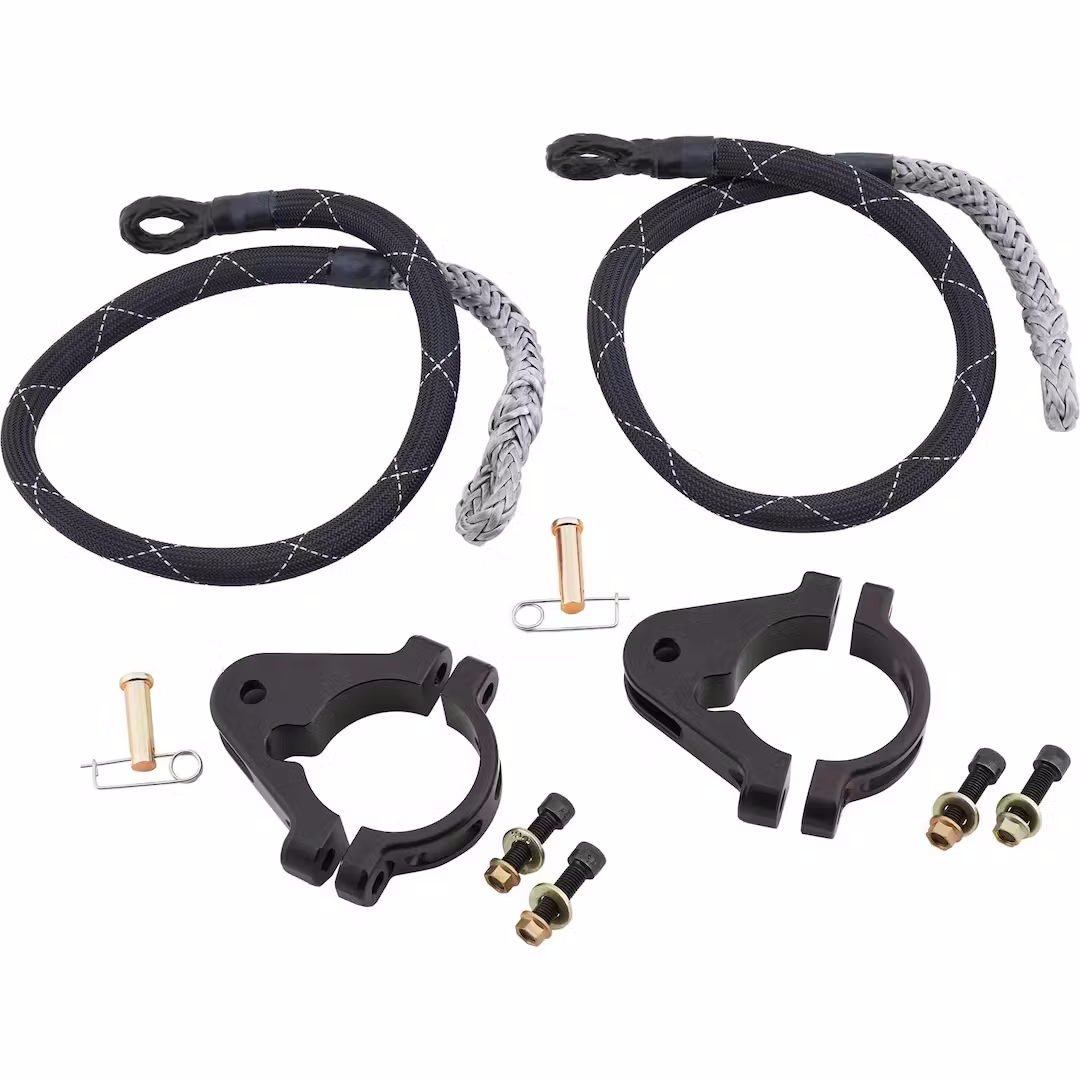
In dirt track racing, spectators are often situated relatively close to the track. Tethers help minimize the likelihood of debris being thrown into the spectator areas, reducing the risk of injuries to those watching the race.

During an accident, emergency personnel and track workers may need to approach the scene quickly to provide assistance. Tethers help prevent loose car parts from posing a danger to these individuals, allowing them to safely attend to the driver and the vehicle.

Tethers help protect the driver by reducing the risk of debris entering the cockpit during a crash. This can help prevent injuries caused by flying debris and contribute to a safer racing environment.

In dirt track racing, spectators are often situated relatively close to the track. Tethers help minimize the likelihood of debris being thrown into the spectator areas, reducing the risk of injuries to those watching the race.

During an accident, emergency personnel and track workers may need to approach the scene quickly to provide assistance. Tethers help prevent loose car parts from posing a danger to these individuals, allowing them to safely attend to the driver and the vehicle.

With consistency in driver and car safety requirements, the biggest variable is the field of play — the track itself. Everything from the track surface to the perimeter, fencing, retaining walls, lighting, and of course, the track safety crew work together to ensure the safest possible environment for all involved.
The role of a safety crew at a dirt track is to ensure the safety and well-being of all participants, including drivers, officials, track personnel, and spectators, during racing events. Safety crews are responsible for various tasks that help prevent accidents, respond to emergencies, and provide prompt medical attention if needed. Their presence is essential to creating a secure racing environment and mitigating risks associated with dirt track racing.
Safety crews are trained to respond quickly and effectively to accidents, collisions, and other incidents on the track. Their primary goal is to provide immediate assistance to drivers and ensure their well-being in the aftermath of a crash.
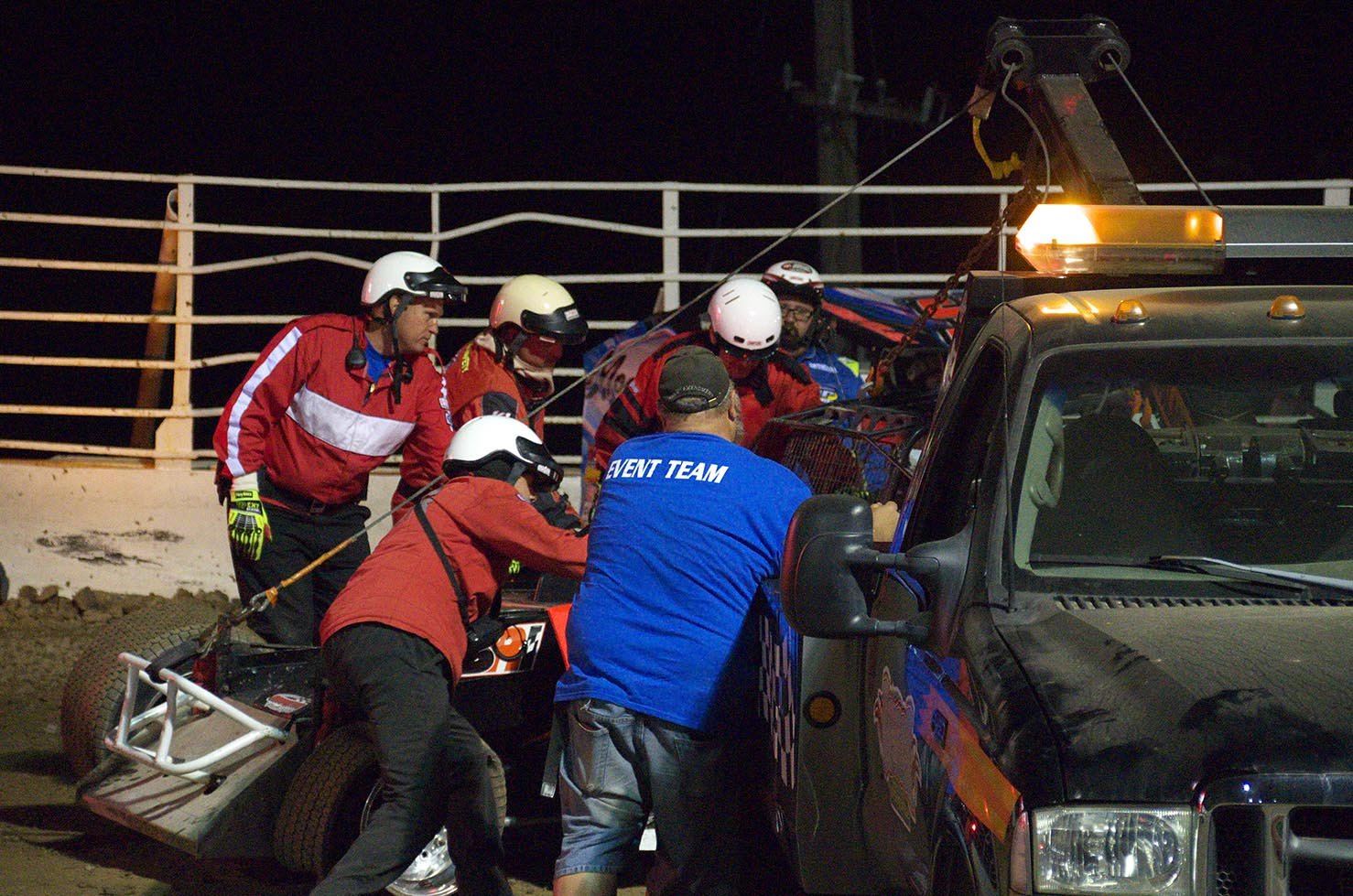
In the event of a serious accident or rollover, safety crews are skilled in extricating drivers from their vehicles safely and efficiently. This may involve carefully removing parts of the race car or utilizing specialized tools to free the driver.

Safety crews include medical personnel, such as paramedics or EMTs, who are trained to provide medical care on-site. They assess injuries, administer first aid, and make critical decisions about whether a driver needs further medical attention or hospitalization.

Safety crews are equipped with fire extinguishers, fire suppression equipment, and other tools to quickly respond to fires or fuel-related incidents. They help ensure that any fires are promptly contained and extinguished.

After an accident, safety crews may assist in removing damaged race cars from the track to clear the way for continued racing. This helps maintain a safe racing environment for the remaining participants.

Safety crews help clean up debris, fluids, and other materials from the track after an incident to ensure that the racing surface is safe for continued racing.

Safety crews enforce safety protocols and track rules to minimize the risk of accidents. They may also ensure that drivers are wearing proper safety gear and adhering to safety regulations.

Before and during races, safety crews inspect the track for any potential hazards or unsafe conditions. They may address issues such as track surface conditions, barriers, and signage to ensure a safe racing environment.

Safety crews also play a role in ensuring the safety of spectators. They may monitor spectator areas to prevent unsafe behaviors and respond to any emergencies involving spectators.

Safety crews maintain effective communication with race officials, drivers, and other personnel to coordinate response efforts and provide updates on the status of incidents.

Safety crews are trained to respond quickly and effectively to accidents, collisions, and other incidents on the track. Their primary goal is to provide immediate assistance to drivers and ensure their well-being in the aftermath of a crash.

In the event of a serious accident or rollover, safety crews are skilled in extricating drivers from their vehicles safely and efficiently. This may involve carefully removing parts of the race car or utilizing specialized tools to free the driver.

Safety crews include medical personnel, such as paramedics or EMTs, who are trained to provide medical care on-site. They assess injuries, administer first aid, and make critical decisions about whether a driver needs further medical attention or hospitalization.

Safety crews are equipped with fire extinguishers, fire suppression equipment, and other tools to quickly respond to fires or fuel-related incidents. They help ensure that any fires are promptly contained and extinguished.

After an accident, safety crews may assist in removing damaged race cars from the track to clear the way for continued racing. This helps maintain a safe racing environment for the remaining participants.

Safety crews help clean up debris, fluids, and other materials from the track after an incident to ensure that the racing surface is safe for continued racing.

Safety crews enforce safety protocols and track rules to minimize the risk of accidents. They may also ensure that drivers are wearing proper safety gear and adhering to safety regulations.

Before and during races, safety crews inspect the track for any potential hazards or unsafe conditions. They may address issues such as track surface conditions, barriers, and signage to ensure a safe racing environment.

Safety crews also play a role in ensuring the safety of spectators. They may monitor spectator areas to prevent unsafe behaviors and respond to any emergencies involving spectators.

Safety crews maintain effective communication with race officials, drivers, and other personnel to coordinate response efforts and provide updates on the status of incidents.

A catch fence in dirt racing, also commonly referred to as a safety fence or containment fence, serves as a protective barrier designed to prevent race cars from leaving the track and entering spectator areas in the event of an accident or collision. The primary purpose of a catch fence is to enhance safety for spectators, drivers, and track personnel by containing any potential debris, flying parts, or even entire race cars within the confines of the racing circuit.
In dirt racing, accidents and collisions can result in debris such as car parts, tires, and other objects being propelled into the air. The catch fence acts as a barrier that helps contain these flying objects within the track area, preventing them from reaching the spectator stands or other areas where people may be present.

In the event of a crash, a race car may become airborne or lose control. The catch fence helps prevent these cars from leaving the track and potentially entering areas where spectators are located. This containment reduces the risk of injury to both spectators and drivers.

A well-designed catch fence can absorb and dissipate some of the impact force if a race car makes contact with it. This can help reduce the severity of a collision and contribute to driver safety.

By preventing debris from reaching the spectator areas, catch fences contribute to the safety of those watching the race. Spectators can enjoy the excitement of the event without worrying about the risk of flying objects.

Catch fences also provide protection for drivers by preventing their vehicles from leaving the track and potentially colliding with barriers, walls, or other obstacles located outside the racing surface.

In dirt racing, accidents and collisions can result in debris such as car parts, tires, and other objects being propelled into the air. The catch fence acts as a barrier that helps contain these flying objects within the track area, preventing them from reaching the spectator stands or other areas where people may be present.

In the event of a crash, a race car may become airborne or lose control. The catch fence helps prevent these cars from leaving the track and potentially entering areas where spectators are located. This containment reduces the risk of injury to both spectators and drivers.

A well-designed catch fence can absorb and dissipate some of the impact force if a race car makes contact with it. This can help reduce the severity of a collision and contribute to driver safety.

By preventing debris from reaching the spectator areas, catch fences contribute to the safety of those watching the race. Spectators can enjoy the excitement of the event without worrying about the risk of flying objects.

Catch fences also provide protection for drivers by preventing their vehicles from leaving the track and potentially colliding with barriers, walls, or other obstacles located outside the racing surface.

Track lighting is an essential component of safety measures in dirt racing, especially for nighttime races or events taking place in low-light conditions. Properly illuminated tracks enhance visibility for drivers, officials, and spectators, reducing the risk of accidents and ensuring a safer racing environment.
Adequate track lighting allows drivers to see the track layout, obstacles, and other cars more clearly, even in low-light conditions. Improved visibility helps drivers make informed decisions, react to changing track conditions, and avoid potential hazards, reducing the likelihood of collisions and accidents.
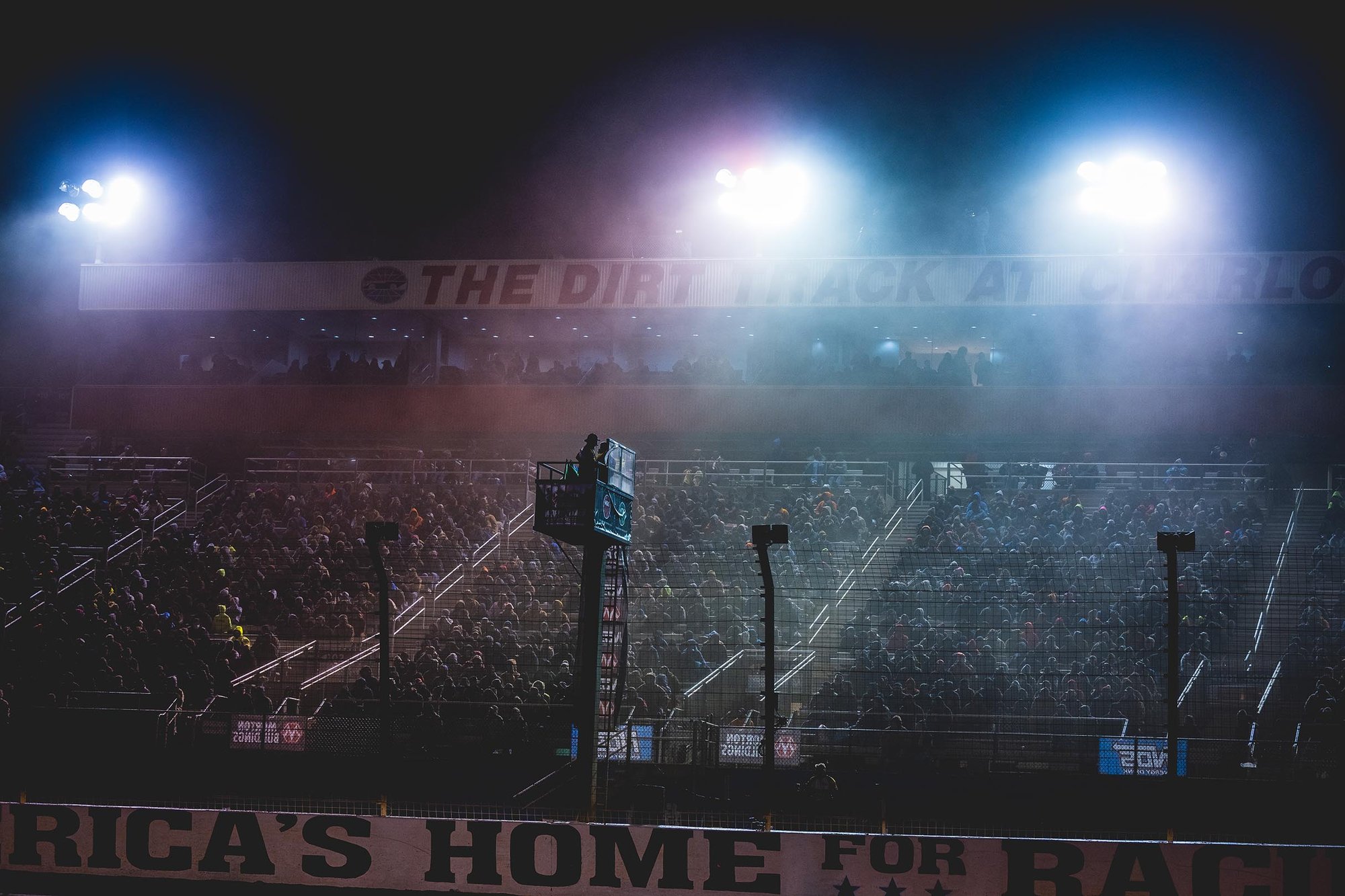
Dispersed around the track so that competitors and officials can clearly see are lights that can display green, yellow flashing, or red lights depending on the current race condition. This is often the first sign to a driver that there is a caution and enables them to slow down in an expeditious and safe way.

Well-lit corners are particularly important for dirt racing, where drivers need to judge the track's banking and conditions accurately. Adequate lighting assists drivers in choosing the best racing line and maintaining control while entering and exiting corners.

Illuminated pit areas are crucial for the safety of race teams, officials, and emergency personnel. Bright lighting helps ensure that pit crew members can perform their tasks effectively, track officials can manage the race, and medical personnel can provide prompt assistance if needed.

Adequate track lighting allows drivers to see the track layout, obstacles, and other cars more clearly, even in low-light conditions. Improved visibility helps drivers make informed decisions, react to changing track conditions, and avoid potential hazards, reducing the likelihood of collisions and accidents.

Dispersed around the track so that competitors and officials can clearly see are lights that can display green, yellow flashing, or red lights depending on the current race condition. This is often the first sign to a driver that there is a caution and enables them to slow down in an expeditious and safe way.

Well-lit corners are particularly important for dirt racing, where drivers need to judge the track's banking and conditions accurately. Adequate lighting assists drivers in choosing the best racing line and maintaining control while entering and exiting corners.

Illuminated pit areas are crucial for the safety of race teams, officials, and emergency personnel. Bright lighting helps ensure that pit crew members can perform their tasks effectively, track officials can manage the race, and medical personnel can provide prompt assistance if needed.

Dress comfortably and wear appropriate clothing for the weather. Closed-toe shoes, long pants, and comfortable shirts are recommended. Additionally, consider wearing ear protection to guard against the loud noise of the engines.
Dust and debris can be kicked up during dirt races, so wearing protective eyewear or goggles is essential to prevent any foreign objects from getting into your eyes.
Follow all rules and regulations provided by the race organizers. Stay within designated viewing areas and avoid standing or sitting in restricted or unauthorized zones.
Keep a safe distance from the track and any barriers. Dirt tracks can have unpredictable conditions, and staying a safe distance away from the action reduces the risk of being hit by debris or an out-of-control vehicle.
Pay attention to any safety announcements, instructions, or warnings provided by race officials. Be prepared to react quickly in case of an emergency
Dirt races can take place in hot and dusty conditions. Make sure to stay hydrated by drinking water throughout the event.
If the event takes place during the day, wear sunscreen, a hat, and sunglasses to protect yourself from the sun's harmful rays.
Do not cross or climb over barricades, fencing, or any other safety structures. These barriers are in place to protect both spectators and participants.
Consuming alcohol or drugs can impair your judgment and reaction times, increasing the risk of accidents. It's best to avoid excessively drinking while attending a dirt race. Please drink responsibly.
When arriving and leaving the event, follow traffic rules and parking instructions. Be patient and cautious, as large crowds can create traffic congestion
If you're attending the race with children, always keep a close watch on them and ensure they stay in safe areas away from the track.
Familiarize yourself with the location of emergency exits and first aid stations. Be prepared to act responsibly in case of an emergency.
Stay focused on the event and your surroundings. Avoid distractions such as texting, taking phone calls, or engaging in activities that take your attention away from the race.
Be prepared for changing weather conditions. Bring appropriate clothing and rain gear if there's a chance of rain.
Be considerate of fellow spectators. Avoid obstructing others' views and be mindful of your behavior.

Sanctioning bodies, tracks, car owners, drivers, chassis builders and other industry stakeholders have been working together for years to ensure that the cars are as safe as they possibly can be given the open-wheel nature of the discipline.
